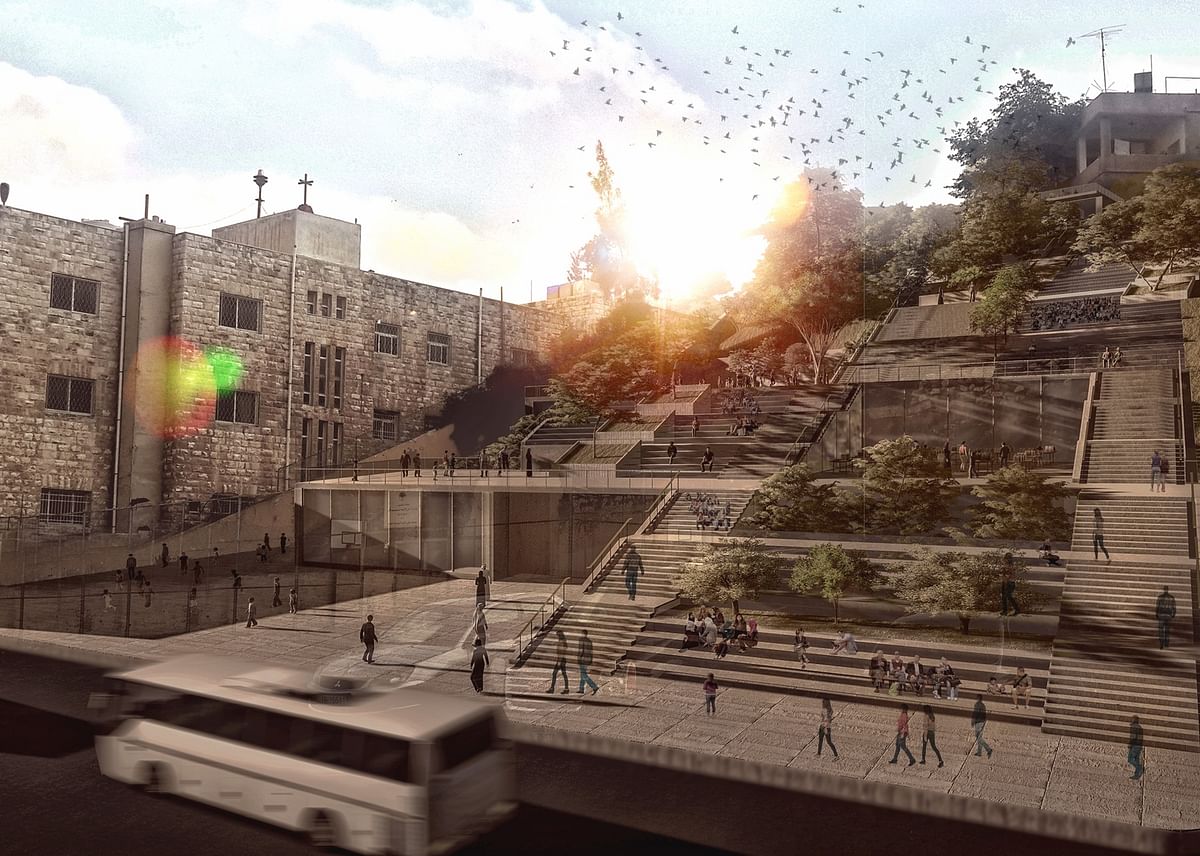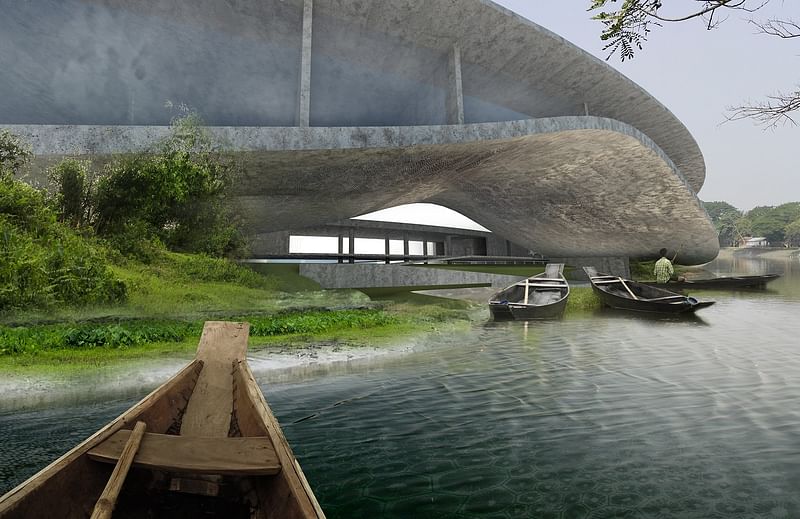Sponsored Post by Tamayouz Excellence Award
A look back on the winning student projects of Tamayouz's International Graduation Projects Award
By Sponsor|
Monday, Sep 28, 2020

Related
Tamayouz Excellence Award, an international architecture awards programme with seven prizes and competitions, has run its International Graduation Projects Award since 2016. Each year, students worldwide studying architecture, urban design, urban planning, architecture technology and landscape design are invited to register and submit their graduation projects for a chance to win a two-year Master's scholarship to the Polytecnico di Milano.
With the deadline for registration and submission to the International Graduation Projects Award 2020 coming up on 1 October, 2020, Tamayouz is delighted to highlight the first-place winning projects of the award since its inaugural cycle in 2016, which illustrate how students around the world are working to respond to local and global challenges.
To register for Tamayouz International Graduation Projects Award 2020, please visit here. To download the competition brief, please visit here. Registration and submissions deadlines for the award are 1 October, 2020. Further prize information for first, second, third and honourable mentions can be found here.
2016 First Place Winning Projects (Joint Winners): Anna Andronova from Kazan State University of Architecture and Engineering (Russia); Noor Marji from German Jordanian University (Jordan)

Anna Andronova's project, titled 'Perpetual Motion, Kazan Hybrid Hub', redesigns Kazan's infrastructure system. Responding to new types of vehicles, such as quadrocopters, drones, hoverbikes, magnet levitation rails and hyperloops, Anna's graduation project aims to offer a hybrid park that connects the historical site of the New Tatar Sloboda with a green 'wedge'. The park features instant hotels, repair and parking stations, cargo base, waste recycling plants, trade, and recreational spaces that supplement each other in a digitally optimised way. Furthermore, the existing railway is substituted with a significantly faster and more durable hyperloop line. The 'hybrid' forest landscape also provides a joint with the river port and pocket airport, platforms and parking. The project uses Artificial Intelligence, smart systems, Internet of Things, Neuronet, biotechnology, augmented reality, and nanotechnology.

Noor Marji's project, titled 'Square One: Urban Library and Learning Center', aims to redefine the role of a 21st century public library as an urban space, tackling the pitfalls of Amman's educational system (according to the architect). The project does this by providing the spaces and functions needed to instill values that could be the starting point of a complete educational reform. The project is located in a vibrant part of downtown Amman, in Ras Al-Ain, and features a programme with three main functions: an interactive digital library that serves the cultural street edge, a traditional library that serves the school's educational edge, and a learning centre that serves the upper residential edge. The project further incorporates existing elements of its site, such as the original stairs, which offer a main connection between the upper and lower edges of the hilly downtown terrain. Essentially, Noor's project aims to be a common ground that initiates dialogue between the edges.
2017 First Place Winning Project: Nishat Tasnim Oyshee from the University of Asia Pacific in Dhaka (Bangladesh)

Nishat Tasnim Oyshee's project, titled 'Integrated Development Proposal on an Unclaimed Genocidal Site' offers a remembrance space for the Chuknagar Genocide, which occurred during Bangladesh's war of liberation in 1971. Nishat, who worries that the history of the genocide, which has not been well-acknowledged and is only maintained through oral storytelling, plots the historic footprints of the site where the traumatic events took place on a master plan and proposes strategic programmes for three historically intensive zones: a Documentation and Research Institute with a memorial on a paddy field, a factual gallery on the bank of the bazar, and a contemplation shelter that is accessible via boat across the Bhadra River. A guided tour, both with signage and narration, is also proposed, marking a historical point of reference for the future, which will link the past with the present and enable people to realise that all have a responsibility towards maintaining peace among humanity.
2018 First Place Winning Project: Federico Fauli from the Architectural Association School of Architecture (UK)

Federico Fauli's project, titled 'A New Form of Public Space, Conceived as a cross-breed between a Time-City Archive and a Street Market', proposes a tower as an architectural representation of the current 'Palermo Phenomena'. Presenting a new form of public space that blends together an aggregation of fragments, ruins and cultural identities, the tower both generates and digests forms of beauty, moving from antiquity to popular culture. According to Federico, the project is in a constant state of transformation, remaining in a persistent mutation. The proposal here thus pursues the friction between the uncompleted state of a building, and the architects' idealised version of it: how, through this friction, could a city come back to the project, the architect asks. Federico places his project in the historical city centre of Palermo, at Piazza Caracciolo, the core of the ancient Vucciria Market, which once extended through the neighbouring streets. The tower aims to challenge architectural languages by merging masonry mass techniques with new technologies, and explores post-tensioning structures, concrete experimentation, hollowed and reinforced elements, and challenges the current construction notions by introducing artifacts as building material. It further defines a new architectural language based on the amalgamation and super collection.
2019 First Place Winning Project: Lesia Topolnyk from Amsterdam Academy of Architecture (The Netherlands)

Lesia Topolnyk's project, titled 'Un-United Nations Headquarters', examines new opportunities emerging within the interlocking realms of politics and architecture. Lesia explores the role of architecture in absorbing conflict and fostering its fruitfulness within a divided society. Transforming the Sevastopol naval base into a trade port, the project positions Crimea as a gateway to Ukraine and Russia, rather than a zone of avoidance, according to the architect. In this project, an agora, or public open space for assembly, is designed as a counterpart to the UN Headquarters, hence the title of the project. Here, Lesia says, the needs to debate within the political sphere can be met. The project features a chamber, which has become decor for rehearsed dialogues, while all meaningful decisions can take place within the informal spaces. The project further evolves this political institution's typology, proposing a 'corridor-only' model, which offers a practical space for negotiation, as well as a symbol of the journey rather than the end result.
RELATED COMPETITION International Graduation Projects Award


Share
0 Comments
Comment as :